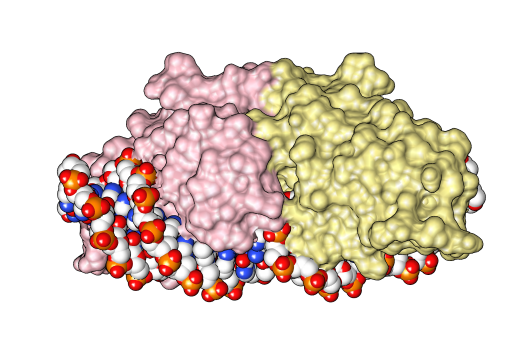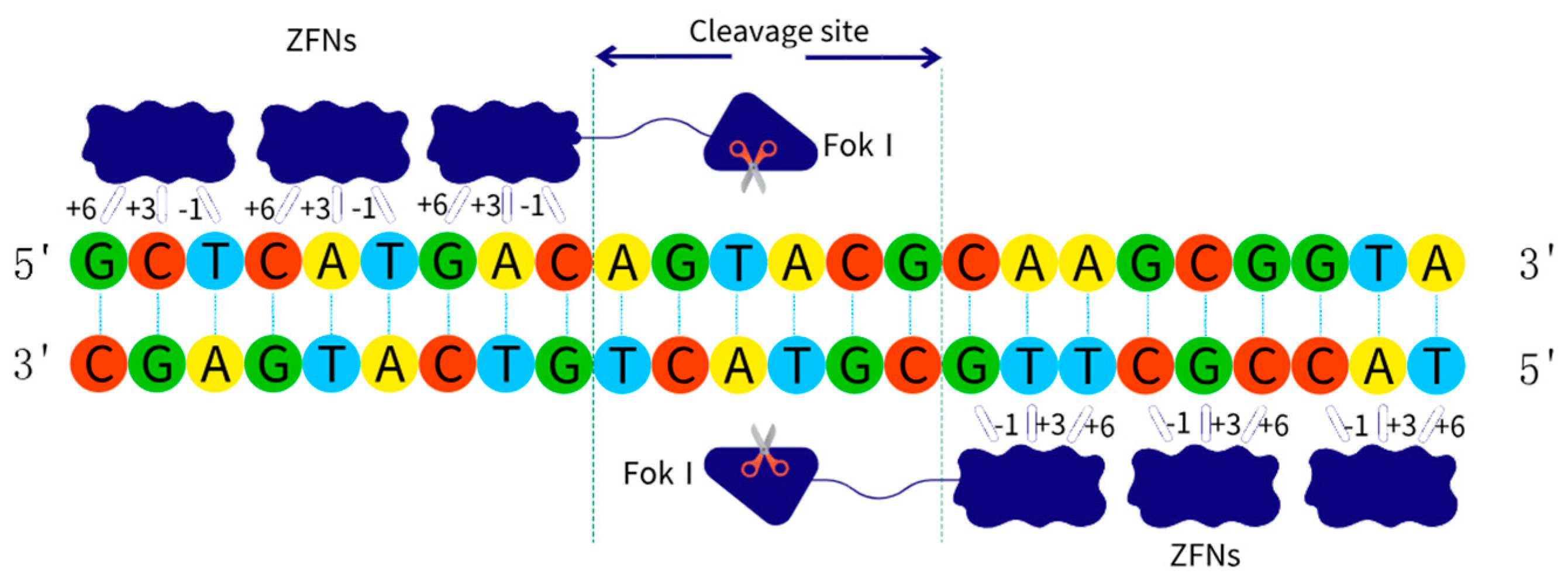|
Gene Targeting
Gene targeting is a biotechnological tool used to change the DNA sequence of an organism (hence it is a form of Genome Editing). It is based on the natural DNA-repair mechanism of Homology Directed Repair (HDR), including Homologous Recombination. Gene targeting can be used to make a range of sizes of DNA edits, from larger DNA edits such as inserting entire new genes into an organism, through to much smaller changes to the existing DNA such as a single base-pair change. Gene targeting relies on the presence of a repair template to introduce the user-defined edits to the DNA. The user (usually a scientist) will design the repair template to contain the desired edit, flanked by DNA sequence corresponding (homologous) to the region of DNA that the user wants to edit; hence the edit is ''targeted'' to a particular genomic region. In this way Gene Targeting is distinct from natural homology-directed repair, during which the ‘natural’ DNA repair template of the sister chromatid i ... [...More Info...] [...Related Items...] OR: [Wikipedia] [Google] [Baidu] |
Physcomitrella Patens
''Physcomitrella patens'' is a synonym of ''Physcomitrium patens'', the spreading earthmoss. It is a moss, a bryophyte used as a model organism for studies on plant evolution, development, and physiology. Distribution and ecology ''Physcomitrella patens'' is an early colonist of exposed mud and earth around the edges of pools of water. ''P. patens'' has a disjunct distribution in temperateness, temperate parts of the world, with the exception of South America. The standard laboratory strain is the "Gransden" isolate, collected by Harold Leslie Keer Whitehouse, H. Whitehouse from Gransden and Waresley Woods, Gransden Wood, in Cambridgeshire in 1962. Model organism Mosses share fundamental genetic and physiological processes with vascular plants, although the two lineages diverged early in land-plant evolution. A comparative study between modern representatives of the two lines may give insight into the evolution of mechanisms that contribute to the complexity of modern ... [...More Info...] [...Related Items...] OR: [Wikipedia] [Google] [Baidu] |
Homing Endonuclease
The homing endonucleases are a collection of endonucleases encoded either as freestanding genes within introns, as fusions with host proteins, or as self-splicing inteins. They catalyze the hydrolysis of genomic DNA within the cells that synthesize them, but do so at very few, or even singular, locations. Repair of the hydrolyzed DNA by the host cell frequently results in the gene encoding the homing endonuclease having been copied into the cleavage site, hence the term 'homing' to describe the movement of these genes. Homing endonucleases can thereby transmit their genes Horizontal gene transfer, horizontally within a host population, increasing their allele frequency at greater than Mendelian rates. Origin and mechanism Although the origin and function of homing endonucleases is still being researched, the most established hypothesis considers them as selfish DNA, selfish genetic elements, similar to transposons, because they facilitate the perpetuation of the genetic elements ... [...More Info...] [...Related Items...] OR: [Wikipedia] [Google] [Baidu] |
Zinc Finger Nuclease
Zinc-finger nucleases (ZFNs) are artificial restriction enzymes generated by fusing a zinc finger DNA-binding domain to a nuclease, DNA-cleavage domain. Zinc finger domains can be engineered to target specific desired DNA sequences and this enables zinc-finger nucleases to target unique sequences within complex genomes. By taking advantage of endogenous DNA repair machinery, these reagents can be used to precisely alter the genomes of higher organisms. Alongside CRISPR, CRISPR/Cas9 and TALEN, ZFN is a prominent tool in the field of genome editing. It was initially created by researcher Srinivasan Chandrasegaran. Domains DNA-binding domain The DNA-binding domains of individual ZFNs typically contain between three and six individual zinc finger repeats and can each recognize between 9 and 18 basepairs. If the zinc finger domains perfectly recognize a 3 basepair DNA sequence, they can generate a 3-finger array that can recognize a 9 basepair target site. Other procedures can u ... [...More Info...] [...Related Items...] OR: [Wikipedia] [Google] [Baidu] |
Endonuclease
In molecular biology, endonucleases are enzymes that cleave the phosphodiester bond within a polynucleotide chain (namely DNA or RNA). Some, such as deoxyribonuclease I, cut DNA relatively nonspecifically (with regard to sequence), while many, typically called '' restriction endonucleases'' or ''restriction enzymes'', cleave only at very specific nucleotide sequences. Endonucleases differ from exonucleases, which cleave the ends of recognition sequences instead of the middle (''endo'') portion. Some enzymes known as "exo-endonucleases", however, are not limited to either nuclease function, displaying qualities that are both endo- and exo-like. Evidence suggests that endonuclease activity experiences a lag compared to exonuclease activity. Restriction enzymes are endonucleases from eubacteria and archaea that recognize a specific DNA sequence. The nucleotide sequence recognized for cleavage by a restriction enzyme is called the ''restriction site''. Typically, a restriction ... [...More Info...] [...Related Items...] OR: [Wikipedia] [Google] [Baidu] |
Yeast
Yeasts are eukaryotic, single-celled microorganisms classified as members of the fungus kingdom (biology), kingdom. The first yeast originated hundreds of millions of years ago, and at least 1,500 species are currently recognized. They are estimated to constitute 1% of all described fungal species. Some yeast species have the ability to develop multicellular characteristics by forming strings of connected budding cells known as pseudohyphae or false hyphae, or quickly evolve into a Multicellular organism, multicellular cluster with specialised Organelle, cell organelles function. Yeast sizes vary greatly, depending on species and environment, typically measuring 3–4 micrometre, μm in diameter, although some yeasts can grow to 40 μm in size. Most yeasts reproduce asexual reproduction, asexually by mitosis, and many do so by the asymmetric division process known as budding. With their single-celled growth habit, yeasts can be contrasted with Mold (fungus), molds, wh ... [...More Info...] [...Related Items...] OR: [Wikipedia] [Google] [Baidu] |
Reverse Genetics
Reverse genetics is a method in molecular genetics that is used to help understand the function(s) of a gene by analysing the phenotypic effects caused by genetically engineering specific nucleic acid sequences within the gene. The process proceeds in the opposite direction to forward genetic screens of classical genetics. While forward genetics seeks to find the genetic basis of a phenotype or trait, reverse genetics seeks to find what phenotypes are controlled by particular genetic sequences. Automated DNA sequencing generates large volumes of genomic sequence data relatively rapidly. Many genetic sequences are discovered in advance of other, less easily obtained, biological information. Reverse genetics attempts to connect a given genetic sequence with specific effects on the organism. Reverse genetics systems can also allow the recovery and generation of infectious or defective viruses with desired mutations. This allows the ability to study the virus ''in vitro'' and ''in v ... [...More Info...] [...Related Items...] OR: [Wikipedia] [Google] [Baidu] |
Plant
Plants are the eukaryotes that form the Kingdom (biology), kingdom Plantae; they are predominantly Photosynthesis, photosynthetic. This means that they obtain their energy from sunlight, using chloroplasts derived from endosymbiosis with cyanobacteria to produce sugars from carbon dioxide and water, using the green pigment chlorophyll. Exceptions are parasitic plants that have lost the genes for chlorophyll and photosynthesis, and obtain their energy from other plants or fungi. Most plants are multicellular organism, multicellular, except for some green algae. Historically, as in Aristotle's biology, the plant kingdom encompassed all living things that were not animals, and included algae and fungi. Definitions have narrowed since then; current definitions exclude fungi and some of the algae. By the definition used in this article, plants form the clade Viridiplantae (green plants), which consists of the green algae and the embryophytes or land plants (hornworts, liverworts ... [...More Info...] [...Related Items...] OR: [Wikipedia] [Google] [Baidu] |
Polymerase Chain Reaction
The polymerase chain reaction (PCR) is a method widely used to make millions to billions of copies of a specific DNA sample rapidly, allowing scientists to amplify a very small sample of DNA (or a part of it) sufficiently to enable detailed study. PCR was invented in 1983 by American biochemist Kary Mullis at Cetus Corporation. Mullis and biochemist Michael Smith (chemist), Michael Smith, who had developed other essential ways of manipulating DNA, were jointly awarded the Nobel Prize in Chemistry in 1993. PCR is fundamental to many of the procedures used in genetic testing and research, including analysis of Ancient DNA, ancient samples of DNA and identification of infectious agents. Using PCR, copies of very small amounts of DNA sequences are exponentially amplified in a series of cycles of temperature changes. PCR is now a common and often indispensable technique used in medical laboratory research for a broad variety of applications including biomedical research and forensic ... [...More Info...] [...Related Items...] OR: [Wikipedia] [Google] [Baidu] |
Antibiotic
An antibiotic is a type of antimicrobial substance active against bacteria. It is the most important type of antibacterial agent for fighting pathogenic bacteria, bacterial infections, and antibiotic medications are widely used in the therapy, treatment and antibiotic prophylaxis, prevention of such infections. They may either bactericide, kill or bacteriostatic agent, inhibit the growth of bacteria. A limited number of antibiotics also possess antiprotozoal activity. Antibiotics are not effective against viruses such as the ones which cause the common cold or influenza. Drugs which inhibit growth of viruses are termed antiviral drugs or antivirals. Antibiotics are also not effective against fungi. Drugs which inhibit growth of fungi are called antifungal drugs. Sometimes, the term ''antibiotic''—literally "opposing life", from the Greek language, Greek roots ἀντι ''anti'', "against" and βίος ''bios'', "life"—is broadly used to refer to any substance used against ... [...More Info...] [...Related Items...] OR: [Wikipedia] [Google] [Baidu] |
Protonema
A protonema (plural: protonemata) is a thread-like chain of cells that forms the earliest stage of development of the gametophyte (the haploid phase) in the life cycle of mosses. When a moss first grows from a spore, it starts as a ''germ tube'', which lengthens and branches into a filamentous complex known as a ''protonema'', from which a leafy gametophore, the adult form of a gametophyte in bryophytes, grows. Protonemata are characteristic of all mosses, are present in some liverworts under certain conditions Kohchi, T., Yamato, K. T., Ishizaki, K., Yamaoka, S., & Nishihama, R. (2021). Development and Molecular Genetics of Marchantia polymorpha. Annual Review of Plant Biology, 72(1), 677–702. https://doi.org/10.1146/annurev-arplant-082520-094256 but are absent from hornworts. The protonemata are composed of two cell types: chloronemata, which form upon germination of the spore, and caulonemata, which later differentiate from chloronemata under the influence of plant hormone a ... [...More Info...] [...Related Items...] OR: [Wikipedia] [Google] [Baidu] |
Moss
Mosses are small, non-vascular plant, non-vascular flowerless plants in the taxonomic phylum, division Bryophyta (, ) ''sensu stricto''. Bryophyta (''sensu lato'', Wilhelm Philippe Schimper, Schimp. 1879) may also refer to the parent group bryophytes, which comprise Marchantiophyta, liverworts, mosses, and hornworts. Mosses typically form dense green clumps or mats, often in damp or shady locations. The individual plants are usually composed of simple leaf, leaves that are generally only one cell thick, attached to a plant stem, stem that may be branched or unbranched and has only a limited role in conducting water and nutrients. Although some species have conducting tissues, these are generally poorly developed and structurally different from similar tissue found in vascular plants. Mosses do not have seeds and after fertilisation develop sporophytes with unbranched stalks topped with single capsules containing sporangium, spores. They are typically tall, though some species ar ... [...More Info...] [...Related Items...] OR: [Wikipedia] [Google] [Baidu] |



